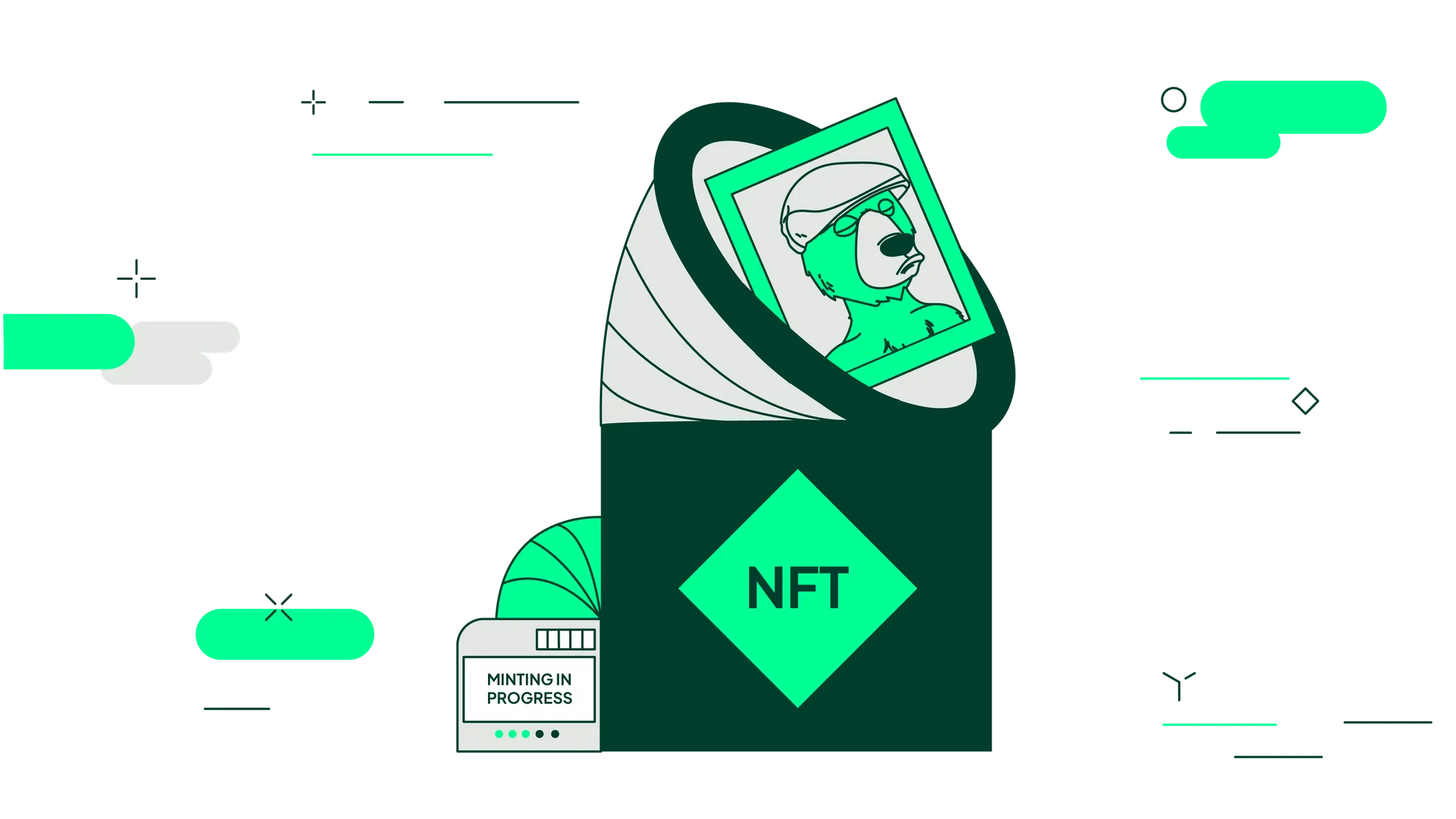
Since the launch of the ERC-721 token standard on Ethereum for non-fungible token (NFT), NFTs have become a popular segment of the blockchain industry. Collections such as Bored Ape Yacht Club have gained multiple celebrity backers, while record sales figures achieved by artists such as Beeple and Pak have commanded global headlines.
Since NFTs are based on public, permissionless blockchains, NFT minting isn’t limited exclusively to established artists – in principle, anyone can mint NFTs for a wide array of use cases.
Why mint an NFT?
Although anyone can create NFTs, in practice NFT minting is mainly performed by two groups – creators and brands.
Creators typically mint their art as NFTs and leverage the ability of NFTs to introduce scarcity to digital goods or files. Most frequently, this is visual media such as digital art, photography, profile pictures, or in-game assets. However, other media types such as music, sounds, or videos can also be minted as NFTs.
Brands may mint NFTs to either create digital merchandise or as a kind of loyalty token that conveys access to private membership groups and events. They are typically distributed by the brand directly.
Generative art and NFT minting
Generative art has become a popular medium for NFTs since large collections of images, each with unique traits, can be created using an algorithm and minted as individual NFTs.
Generative art creators, such as those behind Bored Ape Yacht Club or DeGods, deploy a model where they define the algorithm and the parameters of the collection, including the number of pieces to be created and their rarity. Users then bid for a piece, which is generated by the user via the algorithm, and each piece is assigned an NFT by the underlying smart contract once the entire collection has been created.
Brands and projects use this model to raise capital (since users pay to mint their own unique NFT as part of a collection), to generate brand awareness, and to create loyalty from web3 users.
What are the prerequisites of NFT minting?
Anyone can mint NFTs using a minting platform, regardless of whether they are familiar with blockchain programming languages. Many of the most popular NFT minting platforms, such as OpenSea and MagicEden, are also large, relatively liquid NFT marketplaces which help artists sell their art once it is minted. Each minting platform and marketplace has its own policies and practices regarding NFT minting and listing, so choosing the appropriate platform may involve some research.
NFT minting requires the user to have a cryptocurrency wallet, such as MetaMask or Phantom, pre-funded with some cryptocurrency, such as ETH, MATIC, SOL, or other currency compatible with the chosen minting platform. The amount will need to be sufficient to cover any gas fees and any fees for minting and listing that may be charged by the NFT platform.
If the user is creating assets based on existing art or digital files, they need to have these assets available. However, if the assets are to be created using an algorithm, then the creator needs to define the parameters of the generative art algorithm and the collection it will create, and the user only needs to participate as a bidder.
If the NFTs are to be listed, the minter will also need to have a plan for their sale in accordance with the platform rules. For example, if they are to be auctioned, there may need to be a reserve price and a fixed time duration through which bidders can bid. Many professional NFT creators also use marketing strategies to help their NFTs gain exposure to potential buyers.
Of note, some NFT platforms also require creators to go through an application process to be accepted for minting or listing.
How much does NFT minting cost?
NFT minting costs vary based on several factors, including blockchain transaction fees, and the fees charged by the NFT platform for minting and listing. Transaction fees will vary by blockchain and the number and complexity of transactions.
As noted above, users should ensure that they have enough cryptocurrency in their wallet to cover all fees, or the minting transactions will fail.
Users who are minting NFTs of a specific collection will also have to be familiar with the buying terms enforced by the team selling their NFTs.
NFT minting essentials
- NFT minting is the process of creating non-fungible, or unique, tokens on a blockchain via smart contracts.
- NFT minting is generally carried out by creators to monetize the sales of digital products and by brands to create digital merchandise and promote loyalty.
- To mint NFTs, users must choose a suitable platform, obtain a crypto wallet, and top up their balance to cover blockchain transaction and platform fees.